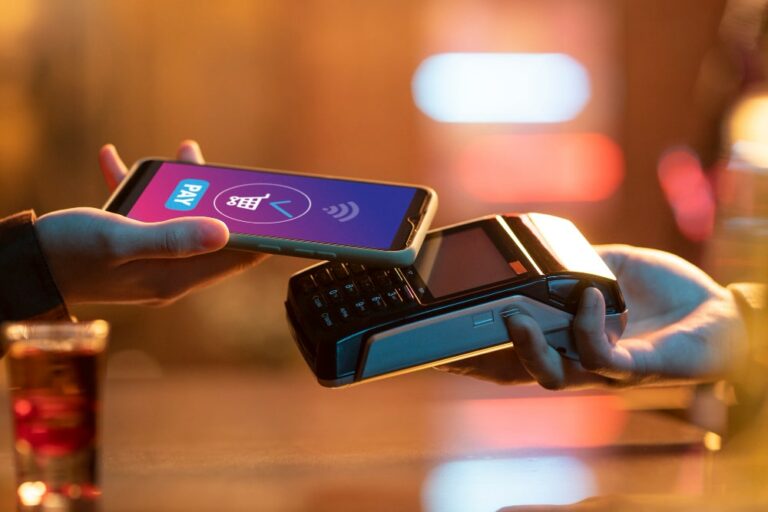In the ever-evolving world of finance and commerce, debit and credit cards have long been the bedrock of our transactional experiences. From swiping magnetic stripes to the rise of EMV chips, these cards have witnessed—and driven—profound changes in how we shop, pay, and manage our finances. However, as we step into an era characterized by rapid technological advancements and shifting consumer preferences, the future of debit and credit cards is set to redefine our payment landscape in ways we could only have imagined.
In this insightful exploration of “The Future of Debit and Credit Cards: Trends and Innovations,” we embark on a journey through the exciting and transformative innovations that are reshaping the way we interact with our trusty pieces of plastic. From the seamless convenience of contactless payments to the heightened security of biometric authentication, from digital wallet integrations that redefine mobile transactions to eco-friendly cards that resonate with our sustainable aspirations, and even the fascinating intersection of cryptocurrency and decentralized finance (DeFi), the possibilities are limitless. These trends not only reflect our evolving financial needs but also our collective desire for smarter, safer, and more sustainable financial tools.
As we delve into each of these trends and innovations, we invite you to envision a future where your wallet is not just a repository of cards but a gateway to a world of cutting-edge technologies and user-centric features. The path ahead promises a payment landscape that is faster, safer, and more in tune with the values of a rapidly changing world. Welcome to “The Future of Debit and Credit Cards: Trends and Innovations,” where we embark on a journey through the exciting world of payment possibilities that await us in the years to come.
Contactless and Tap-to-Pay Technology:
The future of debit and credit cards is marked by an unmistakable trend—seamless, convenient, and ultra-fast payments made possible by contactless and tap-to-pay technology. In the blink of an eye, these innovations are reshaping how we interact with our cards and revolutionizing the in-store and online payment experience.
1. The Rise of Contactless Payments:
- Contactless payments have surged in popularity, allowing cardholders to complete transactions by simply waving or tapping their cards near a compatible terminal. This wave of contactless adoption has been further accelerated by the ongoing global health concerns, as it minimizes physical contact during transactions.
2. Speed and Efficiency:
- One of the standout features of contactless payments is their speed. The days of swiping, inserting, or entering a PIN seem like relics of the past. With a quick tap, payments are processed in seconds, reducing checkout times and enhancing the overall shopping experience.
3. Security Measures:
- Despite the rapidity of contactless transactions, security remains paramount. These cards are equipped with advanced security features, such as tokenization, which replaces sensitive card information with unique tokens. Additionally, most contactless payments have spending limits that require PIN entry for higher-value transactions.
4. Consumer Preferences:
- Consumers are increasingly gravitating toward contactless payments due to their sheer convenience. The ability to make small everyday purchases, like coffee or groceries, without handling cash or signing receipts, is a compelling advantage.
5. Digital Wallet Integration:
- Contactless technology extends beyond physical cards. It seamlessly integrates with popular digital wallets like Apple Pay, Google Pay, and Samsung Pay. Users can add their debit and credit cards to these digital wallets and enjoy tap-to-pay functionality on their smartphones and smartwatches.
6. Merchant Acceptance:
- As contactless payments gain momentum, more merchants are adopting contactless terminals. This widespread acceptance makes it increasingly accessible for consumers to enjoy the benefits of tap-to-pay technology.
7. Global Adoption:
- Contactless payments are not limited to a specific region or country. They have gained global acceptance, allowing travelers to use their cards for seamless payments worldwide. This convenience is particularly appealing to frequent travelers and international shoppers.
8. The Future of Payment Wearables:
- Beyond cards and smartphones, the future of contactless payments includes payment wearables, such as smartwatches and even clothing with embedded payment chips. These wearable devices offer a new level of convenience for on-the-go transactions.
Contactless and tap-to-pay technology represents a significant leap forward in the evolution of debit and credit cards. Their widespread adoption signifies a shift towards a more convenient and efficient payment ecosystem, where the days of fumbling for cash or enduring lengthy checkout processes are replaced by a simple tap that empowers consumers with speed, security, and convenience at their fingertips.
Biometric Authentication and Enhanced Security:
In the ever-evolving landscape of debit and credit cards, one aspect takes precedence above all else: security. The future of these cards is deeply intertwined with biometric authentication, a cutting-edge innovation that promises not only enhanced security but also a more frictionless and personalized payment experience.
1. The Power of Biometrics:
- Biometric authentication harnesses the unique physiological or behavioral characteristics of individuals to verify their identity. This includes fingerprint recognition, facial scanning, iris scans, and even voice recognition.
2. Enhanced Card Security:
- Biometric authentication serves as a formidable defense against unauthorized access and fraud. For instance, fingerprint recognition ensures that only the cardholder can access and use their card, making it nearly impossible for fraudsters to replicate.
3. Reducing the Risk of Unauthorized Transactions:
- Biometric authentication adds an extra layer of security during card transactions. Before authorizing a payment, the cardholder must provide their biometric data, ensuring that even if the card is lost or stolen, it cannot be misused by unauthorized individuals.
4. Biometric Payment Cards:
- The integration of biometric technology directly into payment cards is a notable trend. These cards feature fingerprint sensors embedded on the card itself. Users must place their finger on the sensor to authenticate payments, making the process both secure and convenient.
5. Biometric Verification for Digital Wallets:
- Biometric authentication extends beyond physical cards and is increasingly used for digital wallet transactions. Smartphone users can unlock their digital wallets or authorize payments using their fingerprints or facial recognition.
6. Privacy and Data Protection:
- As biometric authentication gains traction, there is an increased focus on privacy and data protection. Financial institutions and card providers are taking measures to safeguard biometric data, ensuring that it remains secure and confidential.
7. Multi-Layered Security:
- Biometric authentication often works in tandem with other security measures, such as tokenization and two-factor authentication. This multi-layered approach ensures that card transactions are fortified against various types of threats.
8. Global Adoption:
- The adoption of biometric authentication is not limited to specific regions. It is a global trend, with financial institutions and card providers around the world recognizing its potential to enhance card security.
9. User-Friendly Experience:
- Beyond security, biometric authentication offers a user-friendly experience. Cardholders no longer need to remember complex passwords or PINs. Their unique biometric data serves as the key to secure transactions.
Biometric authentication represents a quantum leap in card security, redefining the way we interact with our debit and credit cards. As this technology continues to evolve, consumers can look forward to not only safer transactions but also a more streamlined and personalized payment experience that aligns with the evolving landscape of finance and security in the digital age.
Digital Wallet Integration:
As we navigate the future of debit and credit cards, one trend that stands out prominently is the seamless integration of these cards into the world of digital wallets. This synergy between traditional plastic cards and digital wallet platforms like Apple Pay, Google Pay, and Samsung Pay is transforming the way we make payments, offering unparalleled convenience, security, and global accessibility.
1. The Era of Digital Wallets:
- Digital wallets have become ubiquitous, offering users a convenient way to store and manage their payment cards, loyalty cards, and even boarding passes, all in one place. These mobile apps are reshaping the payment landscape.
2. Card Accessibility on Smartphones:
- The integration of debit and credit cards into digital wallets allows users to add their card details to their smartphones. This means that instead of reaching for their physical cards, consumers can make payments using their smartphones or smartwatches.
3. Seamless Payment Experiences:
- One of the most significant advantages of digital wallet integration is the seamless payment experience. Users can simply tap their smartphones or smartwatches on compatible payment terminals to complete transactions, eliminating the need to carry physical cards.
4. Enhanced Security:
- Digital wallets prioritize security. They use technologies like tokenization and biometric authentication (such as fingerprint or facial recognition) to safeguard payment information. This means that even if a user’s device is lost or stolen, their card data remains secure.
5. Global Accessibility:
- Digital wallets transcend geographical boundaries. Users can use their integrated debit and credit cards for payments internationally, often without the need for currency conversion. This accessibility is particularly valuable for travelers.
6. Digital Wallet Loyalty and Rewards:
- Many digital wallet platforms offer loyalty programs and rewards for using their services. This adds an extra layer of benefits for consumers, such as cashback offers or discounts at partner merchants.
7. Contactless Payments:
- Digital wallet integration is closely tied to contactless payments. Users can make contactless payments using their smartphones or smartwatches, contributing to the widespread adoption of this payment method.
8. Retailer Partnerships:
- Digital wallets are forming partnerships with retailers, allowing users to store their loyalty cards, coupons, and gift cards within the app. This consolidation of payment and shopping tools enhances the overall shopping experience.
9. Cross-Device Compatibility:
- The convenience of digital wallet integration extends to various devices. Whether a user prefers using their smartphone, tablet, or smartwatch, their integrated debit and credit cards are accessible on all compatible devices.
Digital wallet integration represents a significant step forward in how we interact with our debit and credit cards. It aligns with the growing demand for mobile-first and contactless payment experiences, providing users with a secure, convenient, and versatile solution that adapts to their evolving financial needs in an increasingly digital world.
Sustainability and Eco-Friendly Cards:
In the pursuit of a more environmentally conscious future, the realm of debit and credit cards is undergoing a transformation. Sustainability and eco-friendliness are emerging as pivotal trends, reshaping the way these cards are manufactured, used, and perceived.
1. Eco-Conscious Materials:
- One of the most significant shifts in the industry is the use of eco-conscious materials in card manufacturing. Cards are being crafted from recycled plastics, biodegradable materials, and even reclaimed ocean-bound plastics. This shift reduces the environmental footprint of card production.
2. Carbon Offset Programs:
- Some card providers are introducing carbon offset programs, where a portion of each transaction’s carbon emissions is offset through environmental initiatives. Cardholders can contribute to reforestation projects, renewable energy investments, or other sustainability efforts.
3. Reduced Plastic Usage:
- Traditional plastic cards are notorious for their environmental impact. In response, card providers are exploring alternatives like paper-based cards and biodegradable materials to reduce plastic usage.
4. Rewards for Eco-Conscious Spending:
- Many eco-friendly cards offer rewards or cashback incentives for eco-conscious spending. Cardholders can earn rewards by making sustainable choices, such as shopping at eco-friendly retailers or using public transportation.
5. Digital-First Approach:
- The eco-friendly trend aligns with the digital-first approach, as it reduces the need for physical cards. Digital wallet integrations and mobile payment apps reduce plastic card production and waste.
6. Educational Initiatives:
- Financial institutions are taking steps to educate consumers about the environmental impact of their spending habits. This includes providing insights into how everyday purchases contribute to carbon emissions and how to make more sustainable choices.
7. Partnerships with Environmental Organizations:
- Some card providers form partnerships with environmental organizations. These partnerships may involve donations to environmental causes with each card purchase or the inclusion of environmentally themed card designs.
8. Transparency and Accountability:
- Consumers are increasingly demanding transparency from card issuers regarding their sustainability efforts. Card providers are responding by publishing sustainability reports and committing to eco-friendly practices.
9. Reducing E-Waste:
- Eco-friendly cards also extend to the digital realm. They promote the reduction of electronic waste (e-waste) by encouraging users to extend the lifespan of their devices and adopt sustainable practices in disposing of old electronics.
Sustainability and eco-friendly cards symbolize a growing commitment to environmental stewardship within the financial industry. As these trends gain momentum, consumers have the opportunity to align their spending habits with their values, contributing to a more sustainable and eco-conscious future while still enjoying the convenience and security of their debit and credit cards.
Cryptocurrency Integration and Decentralized Finance (DeFi):
The future of debit and credit cards is not confined to traditional currencies alone; it’s closely intertwined with the rise of cryptocurrencies and the expanding ecosystem of decentralized finance (DeFi). This convergence represents a transformative shift in the way we perceive and use our cards.
1. Cryptocurrency Integration:
- One of the most intriguing developments is the integration of cryptocurrencies like Bitcoin and Ethereum into traditional debit and credit cards. This allows cardholders to seamlessly use their crypto holdings for everyday transactions.
2. Crypto Wallets and Card Linking:
- Users can link their cryptocurrency wallets to their cards, creating a bridge between the crypto world and traditional finance. This enables them to spend crypto assets just like fiat currencies.
3. Real-Time Conversion:
- Many crypto-integrated cards offer real-time conversion of cryptocurrencies into the local currency during transactions. This feature ensures that cardholders can use their crypto holdings for purchases without merchants needing to accept crypto directly.
4. Access to DeFi Services:
- DeFi platforms are gaining prominence, offering financial services like lending, borrowing, and earning interest outside traditional banking systems. Some debit cards enable users to access these DeFi services directly from their card accounts.
5. Increased Financial Inclusion:
- Cryptocurrency integration and DeFi accessibility can potentially increase financial inclusion. People in regions with limited access to traditional banking services can enter the financial ecosystem through cryptocurrencies and DeFi platforms.
6. Secure Custody Solutions:
- Security is a paramount concern when dealing with cryptocurrencies. Many crypto-integrated cards offer secure custody solutions to protect users’ digital assets from theft or fraud.
7. Rewards in Crypto:
- Some cards provide rewards in cryptocurrencies, encouraging cardholders to accumulate digital assets with every purchase. This aligns with the growing popularity of cryptocurrencies as an investment class.
8. Regulatory Considerations:
- The integration of cryptocurrencies into card offerings comes with regulatory considerations. Card providers must navigate compliance standards and regulatory frameworks, which can vary from one jurisdiction to another.
9. Educational Resources:
- The adoption of cryptocurrency and DeFi features is accompanied by educational resources. Card providers often offer guidance to users on how to use these features safely and effectively.
The integration of cryptocurrencies and the embrace of decentralized finance are ushering in a new era of financial possibilities. Debit and credit cards that seamlessly interact with these innovations empower users to explore the decentralized financial ecosystem while maintaining the convenience and security they’ve come to expect from traditional banking. As these trends continue to evolve, they hold the potential to reshape the future of finance and redefine how we use our cards in an increasingly digital and decentralized world.




